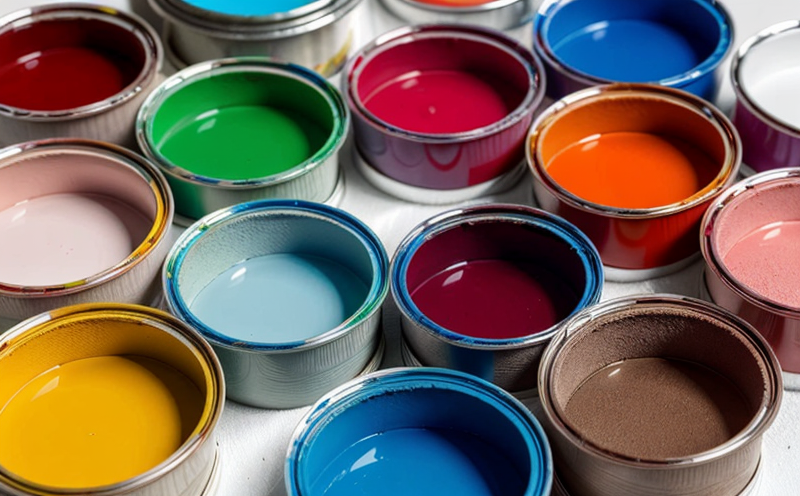ISO 8124-3 Nickel Release in Painted Surfaces
The ISO 8124 series of standards provides guidance on the safety assessment of toys and their components. The third part, Part 3: Metal Migration, specifically addresses nickel release from painted surfaces to ensure compliance with global toy safety regulations.
This service focuses on testing for metal migration, particularly nickel, which is a critical concern due to its potential allergenic effects on children and infants who may come into contact with toys. Nickel has been identified as one of the most common causes of allergic reactions in this age group. Therefore, compliance with ISO 8124-3 is essential for toy manufacturers aiming to meet strict regulatory requirements.
The testing process involves exposing a sample painted surface to an artificial sweat solution designed to simulate human perspiration. This exposure allows nickel to leach from the paint and be quantified using atomic absorption spectroscopy (AAS). The concentration of nickel released is then compared against the acceptable limits set forth in ISO 8124-3.
Preparing a sample for testing requires careful selection of representative areas on the toy surface. These areas should reflect typical usage conditions, such as frequently touched parts or those most likely to come into contact with skin. Once selected, these areas are carefully cleaned and prepared according to ISO 8124-3 guidelines to ensure accurate results.
The testing apparatus used in this process includes an artificial sweat solution and a spectrophotometer capable of detecting nickel at very low concentrations. The use of advanced analytical techniques ensures precision and reliability in the measurement of nickel released from painted surfaces.
Acceptance criteria for compliance with ISO 8124-3 are critical to ensuring toy safety. Nickel release should not exceed certain thresholds, which vary depending on the age group the toy is intended for. For example, toys designed for children under three years old must adhere to stricter limits than those aimed at older children.
Understanding and meeting these standards is crucial for manufacturers aiming to ensure their products meet international safety regulations. Compliance not only protects the health of children but also helps businesses avoid potential legal issues and enhances consumer trust in their brand.
Applied Standards
| Standard Name | Description |
|---|---|
| ISO 8124-3:2014 | Part of the ISO 8124 series, focusing on metal migration in toys. |
| ISO/DIS 18285:2023 | Proposed standard for the determination of metal content in consumer products, including toy paints. |
| Methodology | Description |
|---|---|
| Spectrophotometric Analysis | Utilized for quantifying nickel released from painted surfaces after exposure to artificial sweat. |
| Exposure Conditions | Sample is exposed to a standardized artificial sweat solution for 48 hours at room temperature. |
Benefits
Compliance with ISO 8124-3 Nickel Release in Painted Surfaces testing provides several key benefits:
- Enhanced Safety: Ensures that toys are free from harmful levels of nickel, protecting children's health.
- Avoidance of Legal Issues: Helps manufacturers stay ahead of regulatory changes and avoid costly legal battles.
- Market Access: Facilitates easier entry into international markets where strict safety standards are enforced.
- Reputation Building: Demonstrates a commitment to product safety, enhancing brand reputation and consumer trust.
In today's competitive market, maintaining compliance with global toy safety regulations is not just a legal requirement but also an essential step towards ensuring long-term success in the industry. By adhering to these standards, manufacturers can ensure their products are safe for children while also fostering positive relationships with regulatory bodies and consumers.
Customer Impact and Satisfaction
- Improved Product Quality: Testing helps identify potential safety hazards early in the product development cycle.
- Increased Customer Confidence: Compliance signals to customers that a manufacturer prioritizes product safety, leading to increased customer satisfaction.
- Reduced Risk of Recall: By catching issues during testing, manufacturers can avoid costly and damaging product recalls.
- Promotion of Brand Image: Successful compliance with international standards promotes a positive brand image and fosters loyalty among consumers.
These benefits contribute to higher customer satisfaction and loyalty, ultimately driving business growth. By adhering to ISO 8124-3 Nickel Release in Painted Surfaces testing, toy manufacturers can ensure their products are safe, compliant, and meet the highest standards of quality and reliability.





